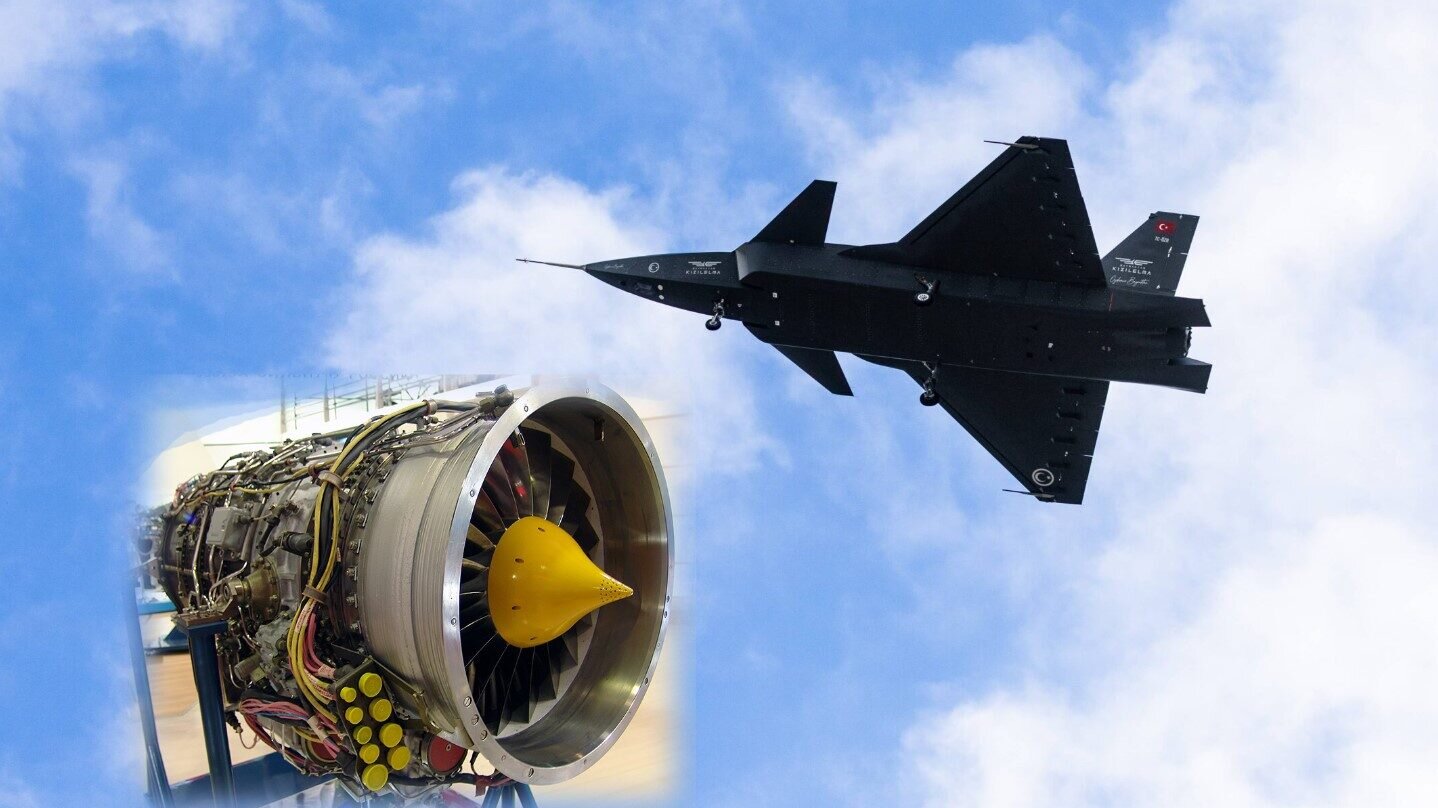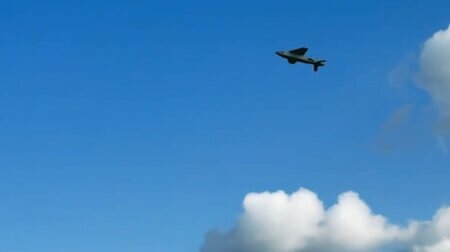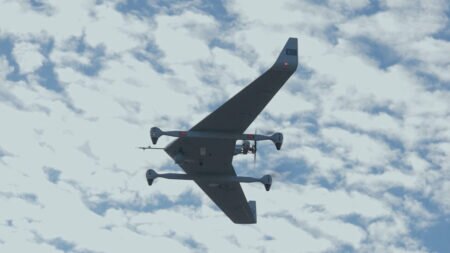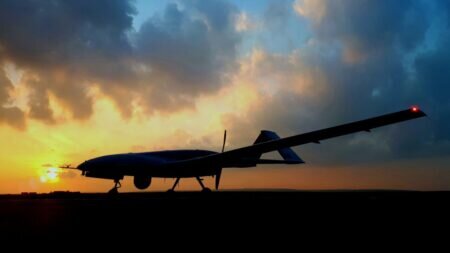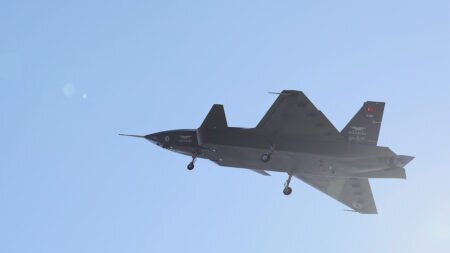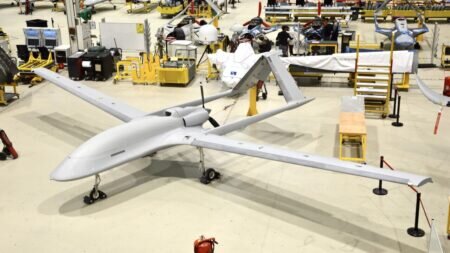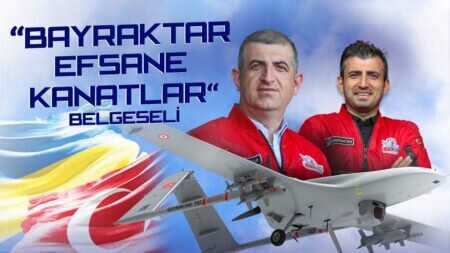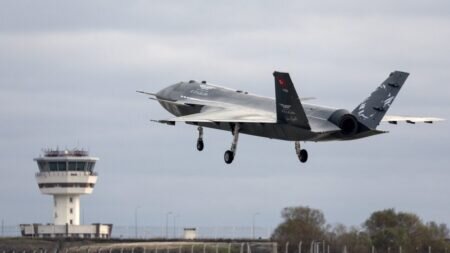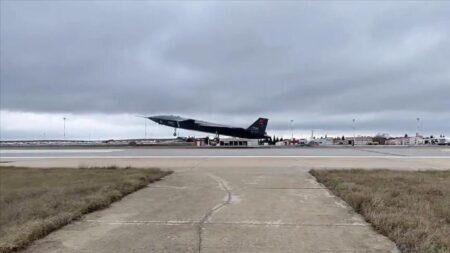Made by Baykar Technologies, Turkey's first jet-powered unmanned fighter aircraft Kızılelma has passed through important stages in its development.
The main goal in the Kızılelma project is “to start mass production towards the end of 2023.” Testing and development will continue until this stage is reached.
As each target in development is successfully passed, we looked into the details of the heart of Kızılelma, its engine.
Developed with capability to perform joint operations with manned aircraft, Kızılelma will be the first unmanned Turkish aircraft with turbofan engines.
The first variant of Kızılelma was developed to take off with an AI-25 engine of Ukrainian origin and to have subsonic speed. According to the data of Baykar Technologies, Kızılelma will initially have a maximum speed of 0.6 mach. Ukraine-made AI-322 engines will also be used in the second Kızılelma variant.
According to aviation experts, with the AI-322 engine, which also has afterburner capability, Kızılelma aims to fly much faster (probably at transonic and supersonic speeds).
Bayraktar Kızılelma-A Engine
Ivchenko AI-25 was developed by Ivchenko OKB from the Soviet Union. The AI-25 was designed for the Yakovlev Yak-40 tri-jet aircraft, often referred to as the first regional jet transport aircraft. The project of this engine began in 1965, the first test flight was made in 1966, and in 1967 permission was granted for mass production.
In the military and civilian twin-shaft mid-bypass turbofan engine family, the Al-25 was the first bypass engine used in short-haul aircraft within the borders of the Soviet Union.
Ukraine-based aircraft engine manufacturer Motor Sich continues to produce these engines.
The AI-25TL, which was developed and designed for use by the Aero L-39 Albatros military trainer, made its first flight in 1968. More than 3,000 Aero L-39 Albatross were produced in total, and 2900 of them are still in active service today.
A smaller version of the AI-25TL, the AI-25TLK was also used for the Chinese Hongdu L-11 fighter trainer.
Another variant of the AI-25, the AI-25TLSh, developed in the 1990s, passed the flight test of the Ukrainian Ministry of Defense in 2002.
Ivchenko-Progress is currently marketing the AI-25TLSh as ab upgrade to existing L-39 Albatros aircraft.
The Ukrainian company developed the AI-25TLT variant to power the Bayraktar Kızılelma UAV upon the request of a "more powerful turbofan engine".
General features of Bayraktar Kızılelma-A Engine:
Type: Medium Bypass Turbofan
Length: 3,358 mm (132.2 inches)
Diameter: ~611.6 mm (24.08 inch)
Dry weight: 350 kg (770 lb)
Performance
Maximum thrust: Takeoff: 1,720 kgf (16.9 kN; 3,800 lbf); Cruise: 515 kgf (5.05 kN; 1,140 lbf)
Overall pressure ratio: 9.5:1
Bypass ratio: 2.0:1
Fuel consumption: 468.1 kg/h (1,032 lb/h)
Specific fuel consumption: Takeoff: 17 g/(kN⋅h) (0.6 lb/(lbf⋅h)); Cruise: 23.1 g/(kN⋅h) (0.815 lb/(lbf⋅h))
Thrust-to-weight ratio: 4.914
Bayraktar Kızılelma-B Engine
Ivchenko-Progress AI-322 is a family of low-bypass turbofan engines developed from the AI-222 engine. The development of the engine continues at Ivchenko-Progress in Zaporizhzhia, Ukraine. The engine was originally designed for the Hongdu L-15 trainer and is now planned to be used on Baykar Bayraktar Kızılelma.
Ivchenko-Progress AI-322 General characteristics
Type: Two-spool low-bypass turbofan
Length: 1,960 mm (77 inches)
Diameter: 640 mm (25 inches)
Dry weight: 440 kg (970 lb) in basic configuration, 560 kg (1,230 lb) in afterburning configuration
Performance
Maximum thrust: 2,500 kgf (24.5 kN; 5,511.6 lbf) in take-off mode (without afterburn), 4,200 kgf (41.2 kN; 9,259.4 lbf) afterburning.
Overall pressure ratio: 15.43:1
Bypass ratio: 1.19:1
Specific fuel consumption: 0.66 kg/(kgf.h) (without afterburning), 1.9 kg/kgf.h (with afterburning)
Thrust-to-weight ratio: 5.68 (without afterburn), 7.5 (with afterburning)
Bayraktar Kızılelma General characteristics
Payload: 1,500 kg (3,300 lb)
Length: 14.7 m (48 ft 3 in)
Wingspan: 10 m (32 ft 10 in)
Height: 3.3 m (10 ft 10 in)
Maximum take-off weight: 6,000 kg (13,228 lb)
Engine (Kızılelma-A): 1 × Ivchenko-Progress AI-25TLT Turbofan engine, 16.9 kN (3,790 lbf) thrust - no afterburner.
Engine (Kızılelma-B): 1 × Ivchenko-Progress AI-322F Turbofan engine, 24.5 kN (5,510 lbf) thrust and 9,900 lbf (44 kN) with afterburner.
Performance
Maximum speed: 1,100 km/h (680 mph, 590 kn) 0.9 Mach
Cruise speed: 735 km/h (457 mph, 400 kn) 0.6 Mach
Combat range: 930 km (580 miles, 500 nmi) with internal fuel
Endurance: 5-6 hours
Service ceiling: 14,000 m (45,000 ft)
Operational altitude: 11,000 m (35,000 ft)
Hardpoints: 2 × internal stations in the fuselage (expected), 6 × external stations in the wings (expected)
Advanced features
Fully Autonomous Takeoff and Landing
Low radar cross section
High Maneuverability
LOS and BVLOS Flight
Take-off and Landing Capability from Short Runway Aircraft Carriers
High Situational Awareness with AESA Radar

